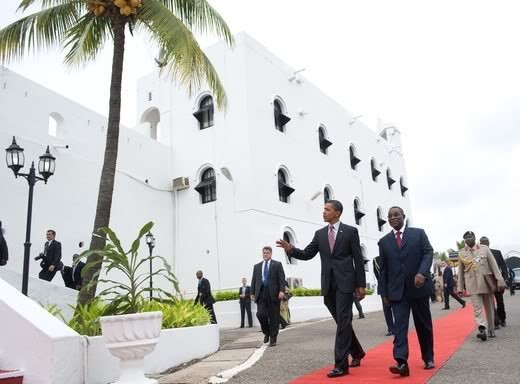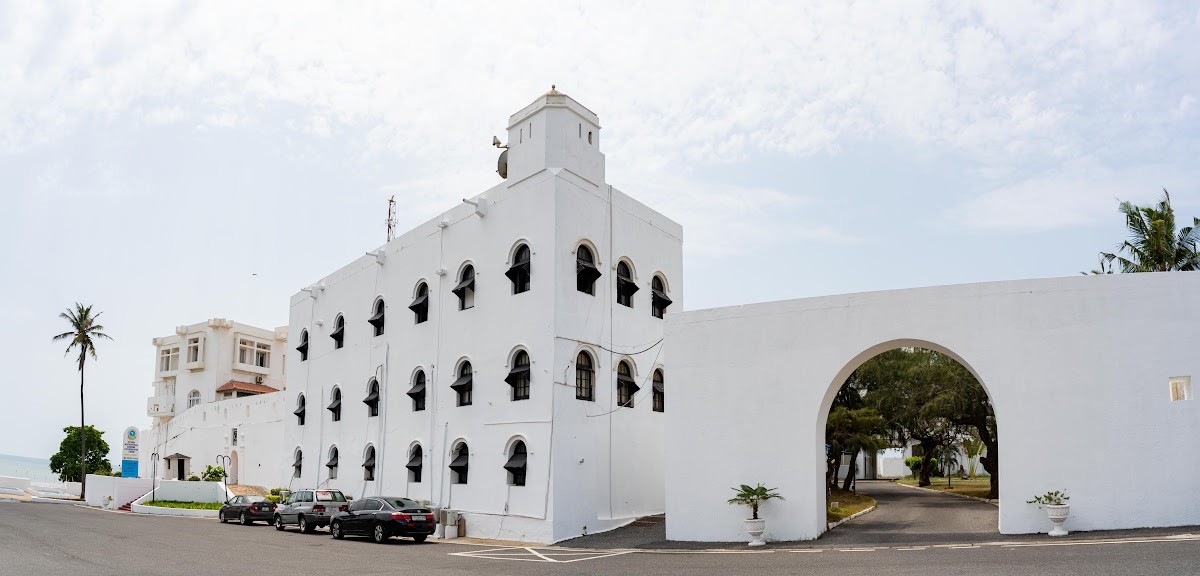Akatekyi Crocodile Pond: A Place...
September 29, 2025
Osu Castle, also known as Fort Christiansborg or the Castle, holds significant historical and cultural importance in Ghana. Located in Osu, Ghana, along the coast of the Gulf of Guinea in Africa, this castle has witnessed the changing tides of power and ownership throughout the centuries.
Originally constructed by Denmark-Norway in the 1660s, the fort played a central role in the Danish Gold Coast as the capital under Danish control. It was actively involved in the transatlantic slave trade, serving as a holding and dispatching point for enslaved people. Over time, the castle changed hands between Denmark-Norway, Portugal, the Akwamu, and Britain, before finally becoming part of post-Independence Ghana.

In 1902, Osu Castle served as the seat of government in Ghana until it was relocated to the Golden Jubilee House. However, the castle's historical significance as a testimony to European colonial influence in West Africa and the Atlantic slave trade led to its inscription on the UNESCO World Heritage List in 1979, along with several other castles and forts in Ghana.
The castle's history is complex and intertwined with various European powers and local ethnic groups. It was initially occupied by the Portuguese in 1550, but their influence waned in the 17th century. Sweden gained control in the 1650s through the efforts of German trader Heinrich Carloff, who obtained permission from the King of Accra to build a fortified lodge. However, control shifted to the Netherlands and eventually to Denmark-Norway.
Adjacent to other forts controlled by the Dutch and the British, Osu Castle initially struggled to compete due to its smaller size. To overcome this challenge, Denmark-Norway expanded the fort by purchasing additional land and renamed it Fort Christiansborg after Danish King Christian V. The castle became the capital of the Danish Gold Coast, dealing primarily in gold, ivory, and slaves.

The castle witnessed numerous events, including mutinies, changes in ownership, and conflicts with neighbouring powers. It was occupied by the Akwamu ethnic group in 1693, disguised as merchants, who traded with various nations during their one-year stay. Eventually, the fort returned to Danish control in 1694 after being sold back by Assameni, the Akwamu leader.
Over time, the castle underwent extensions, reconstructions, and repairs, expanding its size and accommodating the colonial government. In 1850, the British acquired Denmark's Gold Coast possessions, including Fort Christiansborg. The castle served as the residence for Ghana's colonial powers until it was briefly abandoned from 1890 to 1901, during which it was used as a constabulary mess and a psychiatric asylum.
After Ghana gained independence in 1957, the fort became Government House, serving as the residence of the Governor-General and later Ghana's first president, Kwame Nkrumah. In 2005, there was a debate regarding whether Osu Castle should continue as the seat of government due to its association with slavery and inadequate facilities. Ultimately, the seat of government was moved to the Jubilee House (formerly The Flagstaff House), while Osu Castle transitioned into a presidential museum.

Today, Osu Castle stands as a museum that showcases presidential artefacts, papers, waxworks, old paintings of past colonial leaders, books, artworks, and other historical items related to Ghana's presidents. It serves as a testament to the country's history and provides a space for visitors to honour and learn about Ghana's rich heritage. While this information was accurate as of September 2021, it's essential to note that there may have been further developments or changes regarding the usage of Osu Castle since that time.
September 29, 2025
September 29, 2025
September 26, 2025
September 18, 2025
September 18, 2025
September 4, 2025
September 3, 2025
August 28, 2025
August 19, 2025
August 8, 2025